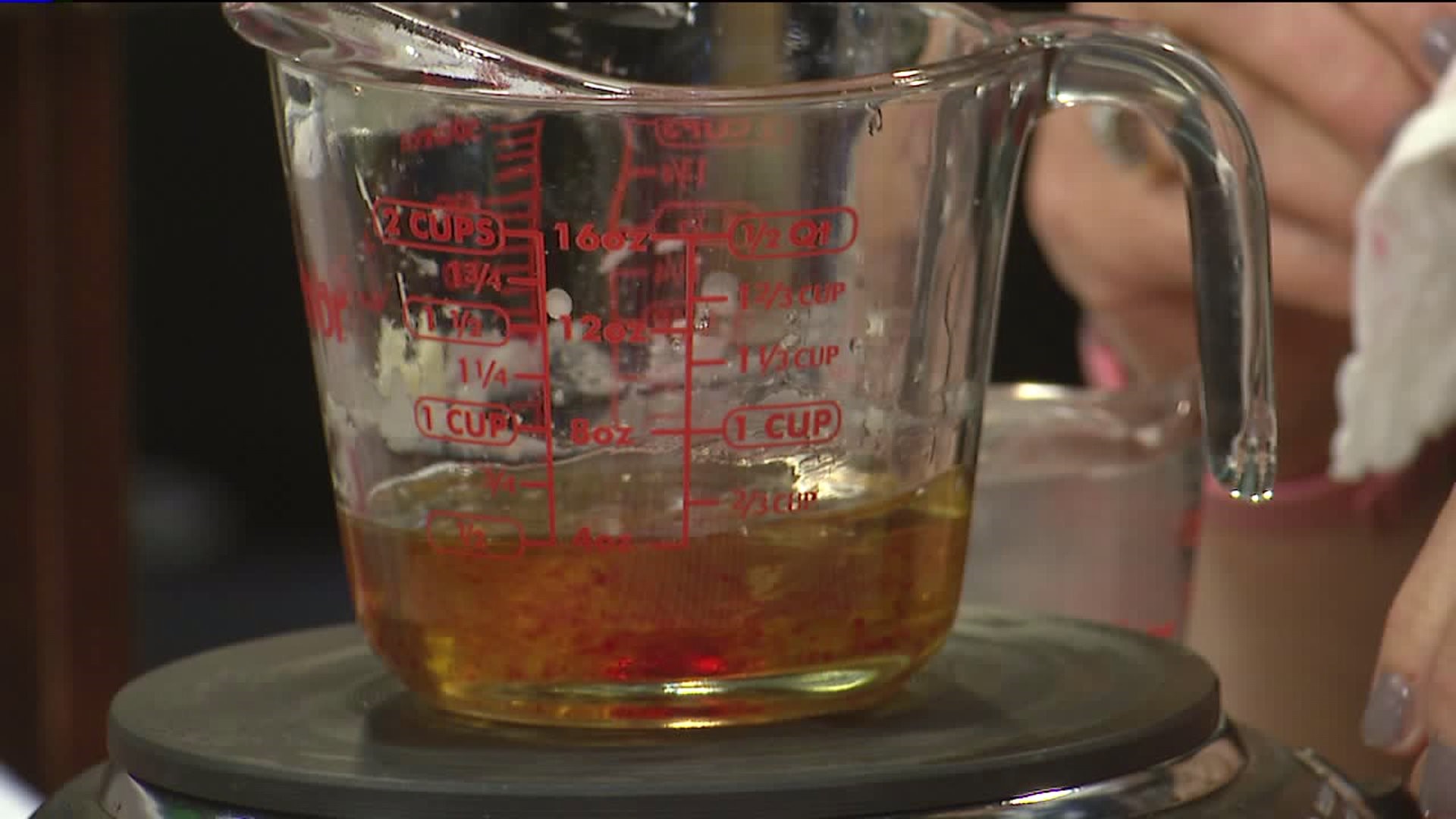MOLINE- DeAnne Bloomberg, Manager of the Rock Island County Farm Bureau, will join us Wednesday, August 8, on Good Morning Quad Cities to show us how to make lip balm from soybean oil.
The objective is for students to see as beeswax, a solid, is melted to a liquid and combined with
soybean oil. The mixture cools and turns to a solid. Students will also discuss the moisture retaining properties of oil to animals and plants.
According to the Rock Island County Farm Bureau's website, the materials needed for each student are below:
• lip balm container
For class:
• 3.5 ounces (l00g) beeswax • 1-1/2 cups (360 ml) soybean oil
• stir stick • hot plate
• beaker • hot pad
• 1 bottle (3.7ml) of cooking flavoring oil (optional)
The above recipe will make enough to fill 30 containers about 1/2 full.
Directions:
The block of beeswax can be easily broken up into pieces by placing the block in a large freezer bag and have the students break it up with a hammer. Weigh 100g of the small pieces in a 600 ml beaker. Put the beaker with the beeswax on the hot plate. Turn on the hot plate before adding soybean oil so that students can see the wax begin to melt. With the hot plate on low, heat the mixture of beeswax and soybean oil, stirring occasionally. When the beeswax is completely melted, turn off the heat. If you choose to add flavoring, add the contents of the bottle (3.7ml) at this time and stir until everything is completely mixed. Ask the students why they think the beeswax and oil mixed. Explain that beeswax is an oily substance and, therefore, mixes with oil.
Pour the liquid into the lip balm containers, filling them about 1/2 full. Allow each student to take his/her
container of lip balm and see the changes as the liquid cools. What is happening as the liquid cools? (It is
getting harder.) Now that the liquid is turning solid, where is the oil? (Mixed with the beeswax.) Discuss solids and
liquids with the students.
When the lip balm has cooled, discuss its uses. We use lip balm to prevent chapping and to moisturize our lips.
The oil and wax in the lip balm create a protective seal that prevents our lips from chapping (drying out).
Lesson Extender: Students can form a "mini" manufacturing company for types of fundraisers. Conduct flavoring and cost analysis
to find out how to make and sell their product. By listing ingredients such as soybean oil, beeswax, and other
information identified on flavoring oils, students can generate labels for their jars or twist-up tubes.

